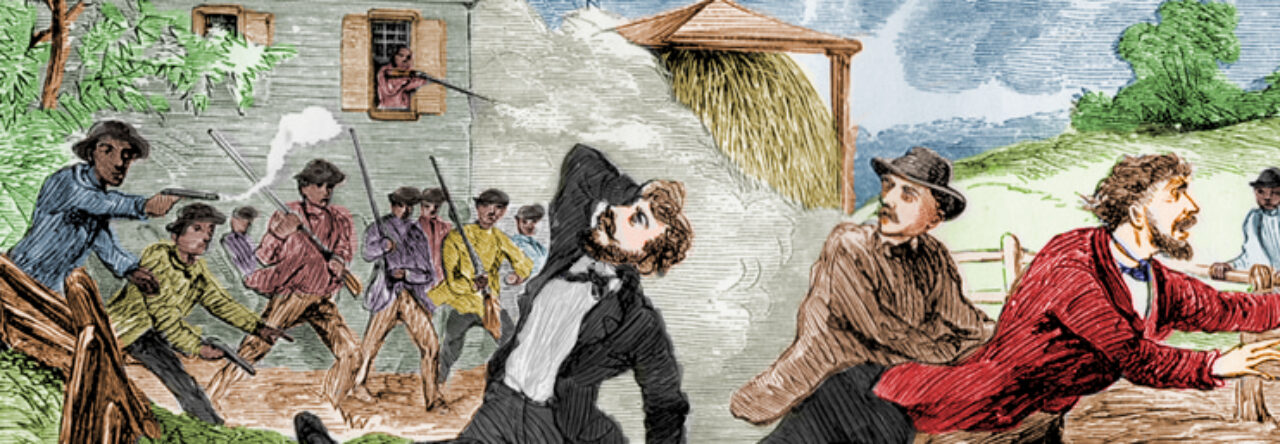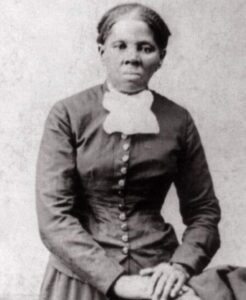House of Representatives approves the 13th Amendment 119 to 56 on January 31, sending it to the states for ratification.
[This post is still under construction, more forthcoming in 2023]

House of Representatives approves the 13th Amendment 119 to 56 on January 31, sending it to the states for ratification.
[This post is still under construction, more forthcoming in 2023]
Sarah H. Bradford, Scenes in the Life of Harriet Tubman (Auburn, NY: W.J. Moses, 1869), FULL TEXT via Documenting the American South

Harriet Tubman (House Divided Project)
The following little story was written by Mrs. Sarah H. Bradford, of Geneva, with the single object of furnishing some help to the subject of the memoir. Harriet Tubman’s services and sufferings during the rebellion, which are acknowledged in the letters of Gen. Saxton, and others, it was thought by many, would justify the bestowment of a pension by the Government. But the difficulties in the way of procuring such relief, suggested other methods, and finally the present one. The narrative was prepared on the eve of the author’s departure for Europe, where she still remains. It makes no claim whatever to literary merit. Her hope was merely that the considerably numerous public already in part acquainted with Harriet’s story, would furnish purchasers enough to secure a little fund for the relief of this remarkable woman. Outside that circle she did not suppose the memoir was likely to meet with much if any sale.
In furtherance of the same benevolent scheme, and in order to secure the whole avails of the work for Harriet’s benefit, a subscription has been raised more than sufficient to defray the entire cost of publication. This has been effected by the generous exertions of Wm. G. Wise, Esq., of this city. The whole amount was contributed by citizens of Auburn, with the exception of two liberal subscriptions by Gerrit Smith, Esq., and Mr. Wendell Phillips.
Mr. Wise has also consented, at Mrs. Bradford’s request, to act as trustee for Harriet; and will receive, invest, and apply, for her benefit, whatever may accrue from the sale of this book.
Abolitionist William Still publishes vigilance committee records in his book The Underground Railroad.
[This post is still under construction, more forthcoming in 2023]
Charles T. Webber’s painting “The Underground Railroad” is unveiled at the World’s Columbian Exposition in Chicago.
[This post is still under construction, more forthcoming in 2023]
Professor Wilbur Siebert authors the first scholarly study of the Underground Railroad, but focuses heavily on white activists and folklore, at the expense of Black abolitionists.
[This post is still under construction, more forthcoming in 2023]
The Weavers release the first commercially recorded version of “Follow the Drinking Gourd.” Adapted by Lee Hays for the popular folk-singing group in the late 1940s, the song celebrates the Underground Railroad, but leads to confusion about whether freedom seekers actually used coded songs to escape.
[This post is still under construction, more forthcoming in 2023]
Historian Larry Gara publishes The Liberty Line which challenges depictions of an elaborate Underground Railroad network. Instead, Gara argues that freedom seekers escaped largely on their own with little organized assistance.
[This post is still under construction, more forthcoming in 2023]
Artist Jacob Lawrence illustrates Harriet and the Promised Land, a children’s book about Harriet Tubman. Lawrence had previously created a series of 31 paintings entitled The Life of Harriet Tubman in 1940.
[This post is still under construction, more forthcoming in 2023]
Anderson Ruffin Abbott was an African American doctor from Canada.
ESSAYS: Barker
ROLES: Abolitionist
Warren Adams was a slave catcher whose attempt to recapture a family of freedom seekers in 1851 was thwarted when residents in northern Coahuila, Mexico, defended the freedom seekers with arms.
ESSAYS: Baumgartner
ROLES: Slaveholder / Slave catcher
Powered by WordPress & Theme by Anders Norén